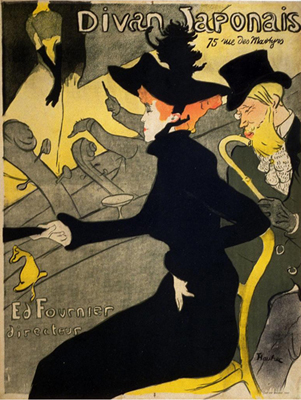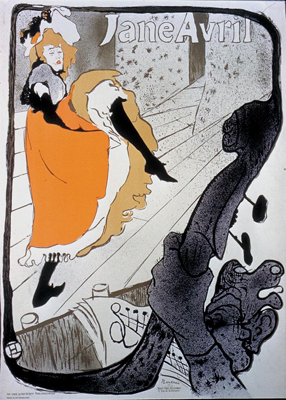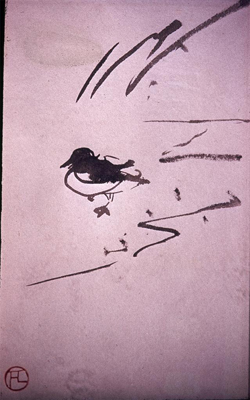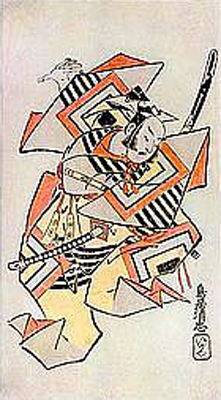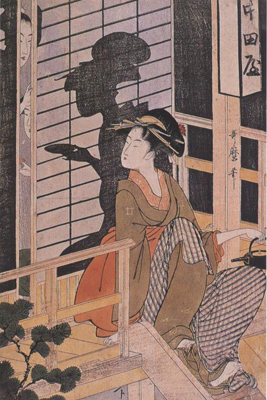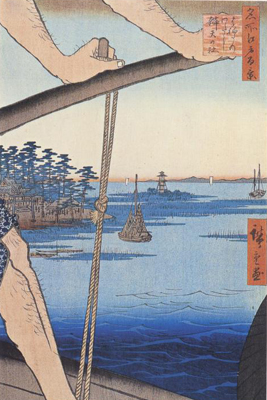
Toulouse-Lautrec transitioned throughout his career to become an important figure in graphic design. This transition took place around 1891, coinciding with a visit to a big Japanese exhibition. After some experimental work that preceded this transition, Lautrec focused mostly on posters created with lithography. His following works feature blocks of solid colors [Fig. 2] hinting at the process of woodblocks [Fig. 6], while his unconventional approaches on creating compositions also suggest Japanese influences. The composition of Jane Avril au Jardin de Paris [Fig. 3] features two planes of information: one in which the dancer, Jane Avril, resides, and the other which shows the truncated arm of a bassist, similarly to Hiroshige’s unconventional cropping methods [Fig. 7]. Lautrec’s depictions of figures in movement also relates to Japanese depictions. Jane Avril Dancing [Fig. 1] seems to borrow the frenzy created by the movement conveyed in Torri Kiyotaga’s print of an actor, especially with the use of lines surrounding the figure. Lautrec’s respect for Japanese artists is obvious in his piece Duck in the Manner of Hokusai [Fig. 4], but his use of Eastern influences transcends simple master drawings. He has taken the Japanese treatment of lines and composition and interpreted them though his Western perspective.

